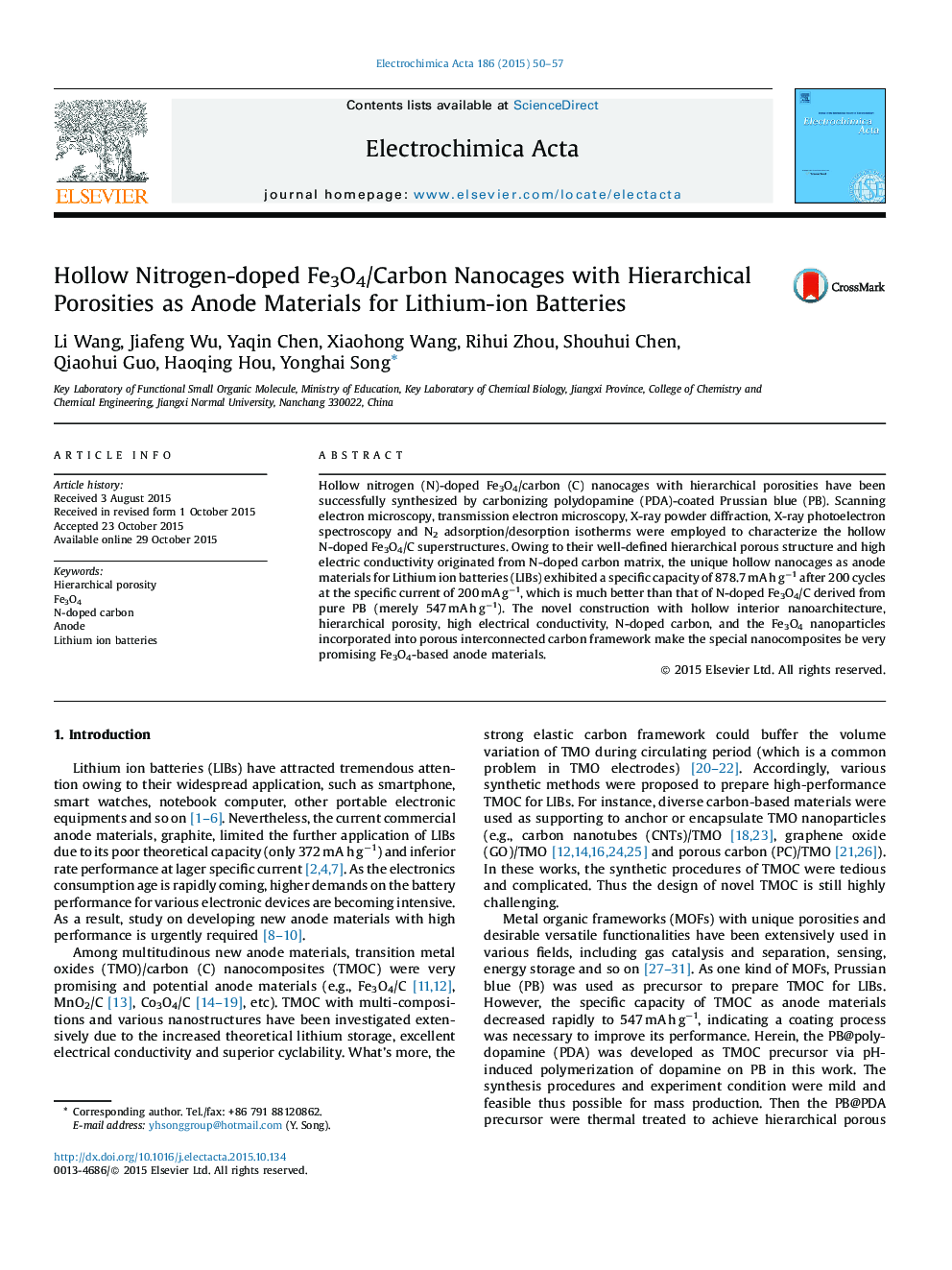| Article ID | Journal | Published Year | Pages | File Type |
|---|---|---|---|---|
| 183539 | Electrochimica Acta | 2015 | 8 Pages |
•Hollow N-doped Fe3O4/C nanocages were prepared by carbonizing PB@ PDA directly.•The nanocomposites exhibit superior electrochemical performance.•Hierarchically porous structure improves the transfer of Li+.•The N-doped carbon matrix buffers the volume variation of Fe3O4.
Hollow nitrogen (N)-doped Fe3O4/carbon (C) nanocages with hierarchical porosities have been successfully synthesized by carbonizing polydopamine (PDA)-coated Prussian blue (PB). Scanning electron microscopy, transmission electron microscopy, X-ray powder diffraction, X-ray photoelectron spectroscopy and N2 adsorption/desorption isotherms were employed to characterize the hollow N-doped Fe3O4/C superstructures. Owing to their well-defined hierarchical porous structure and high electric conductivity originated from N-doped carbon matrix, the unique hollow nanocages as anode materials for Lithium ion batteries (LIBs) exhibited a specific capacity of 878.7 mA h g−1 after 200 cycles at the specific current of 200 mA g−1, which is much better than that of N-doped Fe3O4/C derived from pure PB (merely 547 mA h g−1). The novel construction with hollow interior nanoarchitecture, hierarchical porosity, high electrical conductivity, N-doped carbon, and the Fe3O4 nanoparticles incorporated into porous interconnected carbon framework make the special nanocomposites be very promising Fe3O4-based anode materials.
Graphical abstractFigure optionsDownload full-size imageDownload as PowerPoint slide
